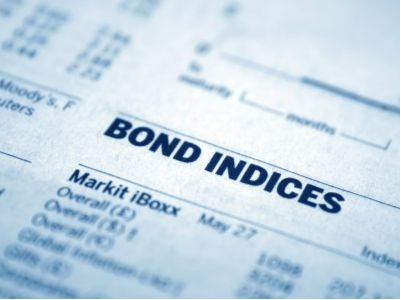Shydney's 2025 Investment Outlook: Asian investment-grade credit will continue to provide strong returns.
2024-11-25 14:28
Chris Lau, Senior Portfolio Manager of Invesco Fixed Income, publishes the investment outlook for 2025.
Chris Lau, portfolio manager of Invesco Fixed Income High-Grade Investment, stated in his 2025 investment outlook that policies implemented by President Trump may set the tone for all asset classes in 2025. However, central banks in various Asian countries are expected to adopt policies that support exports and domestic demand. In the medium term, Invesco believes that US inflation will remain around current levels. However, economic growth is expected to continue to slow down, providing a reasonable basis for the Federal Reserve to ease its monetary policy cycle. Supported by the trend of US Treasury bonds, Asian investment-grade credit is expected to continue to provide strong returns in 2025.
Chris Lau mentioned that despite uncertainty surrounding US policies and interest rate paths, stable fundamental factors and strong technical factors should keep Asian credit spreads at tight levels. The decreasing rate volatility in the first half of 2025 is expected to gradually attract capital inflows into the Asian investment-grade credit market. Invesco believes that Asian credit spreads are unlikely to narrow significantly from current levels, but strong yields should continue to support the market's development prospects in 2025.
Chris Lau stated that in recent months, global macroeconomic events have continued to dominate market performance. The Federal Reserve's unexpected 50 basis point rate cut at the September Federal Open Market Committee (FOMC) meeting, as well as China's announcement of easing measures, have been beneficial to Asian credit. However, expectations of changes in the Federal Reserve's policy path and uncertainties surrounding the US elections have significantly increased market volatility. Despite the massive sell-off of US Treasury bonds, Asian investment-grade credit has recorded significant returns so far this year.
Due to strong recent US macroeconomic data, market expectations that the Federal Reserve's dovish stance may weaken. It is expected that President Trump's re-election and a potential Republican victory will push up US interest rates, as Trump's key policy measures (tariffs, fiscal policy, immigration) are expected to pose inflation risks and significantly expand the fiscal deficit. At the recent Federal Open Market Committee meeting in November, Federal Reserve Chairman Powell declined to comment on Trump's policy agenda and the Fed's appropriate response. He reiterated that the Fed's policy decisions will depend on data, and given that the labor market and wage growth are cooling down and inflation is gradually falling towards the Fed's target level, the current economic conditions still support further policy easing.
Chris Lau said that since President Trump won the presidential election, the market has significantly lowered expectations for rate cuts. Uncertainty factors after January have prompted the Fed to slow down its actions. The Federal funds futures market currently implies that the cumulative rate cut by 2025 will be less than 100 basis points. Despite the sell-off of US Treasury bonds, Asian investment-grade credit spreads have continued to narrow in the fourth quarter. The JACI investment-grade credit spread narrowed from 97 basis points (as of August 16, 2024) to 70 basis points (as of November 8, 2024). However, despite high valuations and increased rate volatility, Asian credit investors still prefer to hold bonds. With robust fundamentals and low default rates, Asian credit remains attractive from a total return perspective.
The economic growth of emerging markets in Asia remains steady. Although exports may stay strong in the next 1 or 2 quarters due to advanced shipments, leading to robust real GDP growth, US tariffs may become the major downside risk to economic growth in 2025. Despite ongoing core inflation decline, a stronger US dollar may create resistance and limit the potential rate cuts in Asian emerging markets. Although overall challenges exist for Asian emerging market economies, the ongoing deleveraging trend and ample liquidity suggest that fundamental factors for Asian investment-grade corporate credit can be maintained.
While new bond supply has increased since the beginning of the year, market technical factors remain favorable. Net supply may continue to be negative due to bond redemptions and coupon payments. If US interest rates are expected to be cut later next year, the primary market is expected to become more active. Overall, the primary market does offer attractive relative value opportunities. Invesco expects strong new bond supply in 2025, driven by the financial sector, while new sovereign bond supply is expected to lag. The primary market is expected to remain a focus for investors, and new bond performance and technical factors may drive market performance.
Chris Lau stated that compared to historical levels and global investment-grade credit, Asian investment-grade credit spreads are currently at tight levels. Key areas such as Asian financial bonds, subordinated bank notes, and insurance company subordinated debt offer relatively higher value. After the recent sell-off of rates, the risk premium for long-term credit is starting to show. However, due to potential rate volatility, Invesco continues to favor 5-7 year credit over long-term credit. In the medium term, Invesco maintains a constructive view on Chinese investment-grade credit and expects these companies to benefit from China's loose policies and stimulus measures.
Furthermore, Chris Lau believes that technical factors for Chinese investment-grade credit are expected to remain strong due to domestic purchasing demand. Despite recent volatility, overall volatility in Asian investment-grade credit spreads is not expected to be significant in the first half of 2025. Asian investment-grade credit offers highly attractive returns (yielding low volatility returns in the range of 5% to 5.20%). The pursuit of total returns will continue to drive investment flows.
RECOMMEND

AMAC: In January, 137 new asset-backed special plans were filed, with a total scale of 1122.64 billion yuan.
26/02/2025

Schroder Investment: Investors should consider allocating funds to securitized credit and insurance-linked securities.
26/02/2025

Reuss County Asset Annual Reflection: Policy Tipping Point is very clear. The semiconductor industry in 2025 is a game for the brave.
26/02/2025


